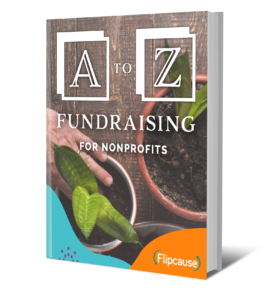Social Media Platforms for Nonprofits
It’s hard to be an expert in any one social media platform, yet legitimate businesses and nonprofits are expected to maintain several different accounts. But it’s worth the effort — becoming well-versed in the various platforms is a vital part of your nonprofit’s marketing strategy, and your accounts can serve as important venues for cultivating relationships with your supporters.
However, just because your nonprofit has an active Facebook doesn’t mean you can automatically utilize Twitter or LinkedIn effectively. Each platform has its unique set of uses and capabilities, reaching different kinds of networks. It’s important to consider your audience as well as the different use capabilities of each network when it comes to deciding which kinds of accounts to maintain.
Below, we break down the different uses between some of the most commonly used social media platforms so your nonprofit can start developing your online presence wisely.
Build Your Following on: Facebook
Facebook is the most popular platform, boasting nearly 1.8 billion active users. It also has universal name recognition, and any business (your nonprofit included) should have a Facebook page — if not for the many networking, informational, and communication benefits, then at least to show that your organization has legitimacy. Facebook is so commonplace that, like having a website or a logo, having a Facebook is an expected part of one’s brand.
Facebook is a great tool for sharing photos and videos, spreading news of events and sharing company updates. It can also be a great place to display your contact information and provide an abstract of what your nonprofit is about. Facebook’s Pages feature is specifically designed for organizations to use and customize, and is a great way to connect with your supporters and garner “likes” and recognition.
You’re also able to collect donations through Facebook. To collect donor data, you’ll want to connect your Donate button to your own donation form. Once you have their name and email, you can stay in touch and ask them the give again in the future.
When using Facebook, invest in using high-quality graphics to help make your page stand out from the rest. Prioritize posting photos or short videos with succinct captions over very lengthy updates. Keep in mind good storytelling techniques. For a complete list of Facebook best practices, see this helpful list by Nonprofit Tech for Good.
While Facebook is widely used across all age groups, keep in mind that more than half of users 65 and older use Facebook, making it a great way to connect with this target group.
Get People Talking on: Twitter
Twitter is an opportunity for continuous and open conversation with your supporters. Its uniqueness is in its character limit: you can post up to 280 characters per tweet. Twitter can additionally do some of the things that Facebook can do, including the posting of photos, links, and polls. It is also a smart tool for networking, which can be done easily through the retweeting of relevant content.
But Twitter’s greatest strength is that, if actively maintained, it can act as a means for connecting with your supporters in real-time. Constituents may tag you in a tweet with praise or concerns, which you can promptly address. A Twitter account can serve as effective PR for your nonprofit as well as help you connect on a conversational, human level with others in the community.
Twitter’s demographics are commonly under 50 and college-educated.
Show Your Impact on: Instagram
Instagram is an entirely visual platform where your nonprofit can post images and videos, which can be customized with creative photo-filters. As such, when using Instagram, it is important that you post selectively high-quality images. Instagram is an excellent venue for visual storytelling and can convey more of a personal vibe with your network. Like on other social media platforms, your nonprofit can follow other users, like their posts, and regram content. Instagram is a responsive community, and your posts are more likely to garner “likes” than on other platforms. Read more about Instagram’s best practices for your nonprofit!
Instagram is a great way to connect with younger adults, as over half of its user base is between the ages of 18 and 29.
Stay Professional with: LinkedIn
LinkedIn is unique in that it is a network specifically designed for professionals. It is a great tool for networking with other nonprofits and community businesses working towards similar goals. You can also use it as a means to connect with potential donors and investors. An active LinkedIn profile showcases your nonprofit as a serious business. It’s worth the trouble setting up since it is lower-maintenance than other social media accounts — weekly logins are generally sufficient.
LinkedIn has a slew of other special features and uses. Your nonprofit can join Groups related to your mission, which can help you engage in conversation, show your expertise, and make connections. You can additionally maintain a blog on Linkedin to establish thought leadership in your sector. And as a professional network, LinkedIn is a handy way to recruit volunteers and staff.
LinkedIn users tend to be college graduates aged 30-64.
While there are many other social media platforms your nonprofit can utilize, this list should give your organization a good start to cultivating an effective social media presence.
Already a social media guru? Which platforms does your nonprofit use and why? Share your knowledge with our community in the comments!

Want to learn the basics of fundraising? Download our latest guide, A to Z Fundraising for Nonprofits:
[email-download download_id=”4007” contact_form_id=”4842”]

0 Comments